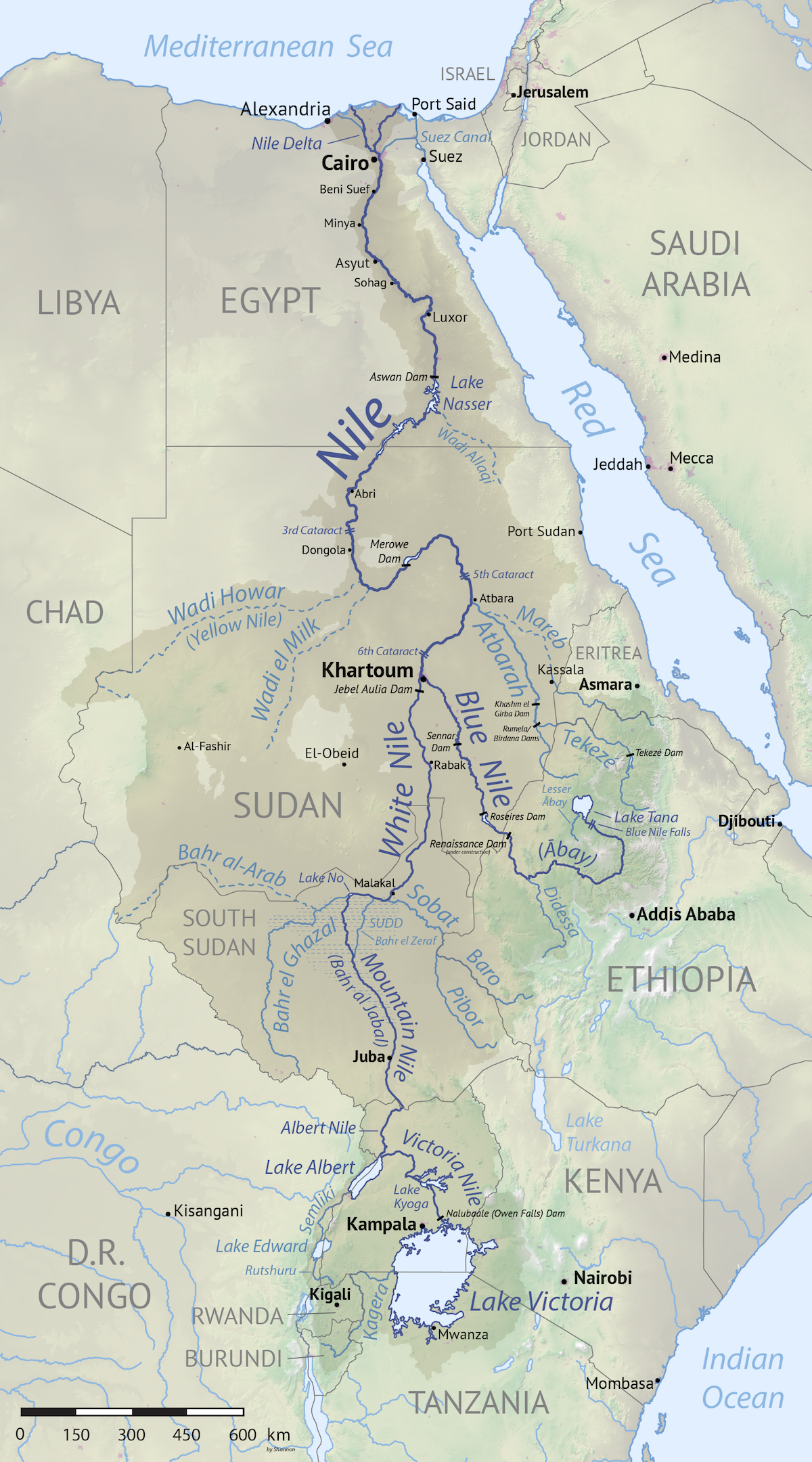|
Vid Flumina
Vid Flumina is a river of liquid methane and ethane on Saturn's moon Titan. The river has been compared to the Nile. It is more than long and flows into Titan's second largest hydrocarbon sea, Ligeia Mare. The surface of Titan is mostly water ice, so Vid Flumina is a river of methane and ethane flowing across and cutting canyons into ice as though it were bedrock. NASA scientists think that it likely has rapids, whirlpools and waterfalls, just like rivers on Earth. Discovery Earlier findings In 2004, NASA The National Aeronautics and Space Administration (NASA ) is an independent agency of the US federal government responsible for the civil space program, aeronautics research, and space research. NASA was established in 1958, succeedi ...'s probe, ''Cassini'' arrived at Saturn to study it and its moons. The scientists at NASA were expecting to find some evidence for liquid methane because of Titan's surface temperature and its methane-rich atmosphere. Howeve ... [...More Info...] [...Related Items...] OR: [Wikipedia] [Google] [Baidu] |
Flumen (planetary Geology)
''Flumen'' (plural ''flumina'') is the Latin word for ''river''. It is used in planetary geology to name landform features on the Saturnian moon Titan. A flumen is a channel on Titan that may carry liquid (usually hydrocarbons, like methane and ethane). Systems of linear, channel-like features on Titan are called flumina. Examples include Vid Flumina, a river of liquid methane and ethane about 400 km long, and Elivagar Flumina Elivagar Flumina is a network of river channels ranging from 23 km to 210 km in length in the region around the Menrva Crater of Titan. The channel system is at least 120 km wide and shows signs of erosion. At its mouth, an alluv ..., a network of river channels in the region around the Menrva Crater of Titan. References Planetary geology Surface features of Titan (moon) {{astronomy-stub ... [...More Info...] [...Related Items...] OR: [Wikipedia] [Google] [Baidu] |
Methane
Methane ( , ) is a chemical compound with the chemical formula (one carbon atom bonded to four hydrogen atoms). It is a group-14 hydride, the simplest alkane, and the main constituent of natural gas. The relative abundance of methane on Earth makes it an economically attractive fuel, although capturing and storing it poses technical challenges due to its gaseous state under normal conditions for temperature and pressure. Naturally occurring methane is found both below ground and under the seafloor and is formed by both geological and biological processes. The largest reservoir of methane is under the seafloor in the form of methane clathrates. When methane reaches the surface and the atmosphere, it is known as atmospheric methane. The Earth's atmospheric methane concentration has increased by about 150% since 1750, and it accounts for 20% of the total radiative forcing from all of the long-lived and globally mixed greenhouse gases. It has also been detected on other pl ... [...More Info...] [...Related Items...] OR: [Wikipedia] [Google] [Baidu] |
Ethane
Ethane ( , ) is an organic chemical compound with chemical formula . At standard temperature and pressure, ethane is a colorless, odorless gas. Like many hydrocarbons, ethane is isolated on an industrial scale from natural gas and as a petrochemical by-product of petroleum refining. Its chief use is as feedstock for ethylene production. Related compounds may be formed by replacing a hydrogen atom with another functional group; the ethane moiety is called an ethyl group. For example, an ethyl group linked to a hydroxyl group yields ethanol, the alcohol in beverages. History Ethane was first synthesised in 1834 by Michael Faraday, applying electrolysis of a potassium acetate solution. He mistook the hydrocarbon product of this reaction for methane and did not investigate it further. During the period 1847–1849, in an effort to vindicate the radical theory of organic chemistry, Hermann Kolbe and Edward Frankland produced ethane by the reductions of propionitrile ( e ... [...More Info...] [...Related Items...] OR: [Wikipedia] [Google] [Baidu] |
Saturn
Saturn is the sixth planet from the Sun and the second-largest in the Solar System, after Jupiter. It is a gas giant with an average radius of about nine and a half times that of Earth. It has only one-eighth the average density of Earth; however, with its larger volume, Saturn is over 95 times more massive. Saturn's interior is most likely composed of a core of iron–nickel and rock (silicon and oxygen compounds). Its core is surrounded by a deep layer of metallic hydrogen, an intermediate layer of liquid hydrogen and liquid helium, and finally, a gaseous outer layer. Saturn has a pale yellow hue due to ammonia crystals in its upper atmosphere. An electrical current within the metallic hydrogen layer is thought to give rise to Saturn's planetary magnetic field, which is weaker than Earth's, but which has a magnetic moment 580 times that of Earth due to Saturn's larger size. Saturn's magnetic field strength is around one-twentieth of Jupiter's. The outer atmosphere is ... [...More Info...] [...Related Items...] OR: [Wikipedia] [Google] [Baidu] |
Titan (moon)
Titan is the largest moon of Saturn and the second-largest natural satellite in the Solar System. It is the only moon known to have a dense atmosphere, and is the only known object in space other than Earth on which clear evidence of stable bodies of surface liquid has been found. Titan is one of the seven gravitationally rounded moons in orbit around Saturn, and the second most distant from Saturn of those seven. Frequently described as a planet-like moon, Titan is 50% larger (in diameter) than Earth's Moon and 80% more massive. It is the second-largest moon in the Solar System after Jupiter's moon Ganymede, and is larger than the planet Mercury, but only 40% as massive. Discovered in 1655 by the Dutch astronomer Christiaan Huygens, Titan was the first known moon of Saturn, and the sixth known planetary satellite (after Earth's moon and the four Galilean moons of Jupiter). Titan orbits Saturn at 20 Saturn radii. From Titan's surface, Saturn subtends an arc of 5.09 ... [...More Info...] [...Related Items...] OR: [Wikipedia] [Google] [Baidu] |
Nile
The Nile, , Bohairic , lg, Kiira , Nobiin language, Nobiin: Áman Dawū is a major north-flowing river in northeastern Africa. It flows into the Mediterranean Sea. The Nile is the longest river in Africa and has historically been considered the List of rivers by length, longest river in the world, though this has been contested by research suggesting that the Amazon River is slightly longer.Amazon Longer Than Nile River, Scientists Say Of the world's major rivers, the Nile is one of the smallest, as measured by annual flow in cubic metres of water. About long, its drainage basin covers eleven countries: the Democratic Republic of the Congo, Tanzania, Burundi, Rwanda, Uganda, Kenya, Ethiopia, Erit ... [...More Info...] [...Related Items...] OR: [Wikipedia] [Google] [Baidu] |
Ligeia Mare
Ligeia Mare is a lake in the north polar region of Titan, the planet Saturn's largest moon. It is the second largest body of liquid on the surface of Titan, after Kraken Mare. Larger than Lake Superior on Earth, it is mostly composed of liquid methane, with unknown but lesser components of dissolved nitrogen and ethane, as well as other organic compounds. It is located at 78° N, 249° W, and has been fully imaged by the '' Cassini'' spacecraft. Measuring roughly 420 km (260 mi) by 350 km (217 mi) across, it has a surface area of about 126,000 km2, and a shoreline over 2,000 km (1,240 mi) in length. The lake may be hydrologically connected to the larger Kraken Mare. Its namesake is Ligeia, one of the sirens in Greek mythology. Description Ligeia Mare has two predominant types of coastline, "crenulated" and "subdued". The former is characterized by hummocky, eroded terrain, the latter by lower, smoother topography and the presence of more ... [...More Info...] [...Related Items...] OR: [Wikipedia] [Google] [Baidu] |
NASA
The National Aeronautics and Space Administration (NASA ) is an independent agency of the US federal government responsible for the civil space program, aeronautics research, and space research. NASA was established in 1958, succeeding the National Advisory Committee for Aeronautics (NACA), to give the U.S. space development effort a distinctly civilian orientation, emphasizing peaceful applications in space science. NASA has since led most American space exploration, including Project Mercury, Project Gemini, the 1968-1972 Apollo Moon landing missions, the Skylab space station, and the Space Shuttle. NASA supports the International Space Station and oversees the development of the Orion spacecraft and the Space Launch System for the crewed lunar Artemis program, Commercial Crew spacecraft, and the planned Lunar Gateway space station. The agency is also responsible for the Launch Services Program, which provides oversight of launch operations and countdown m ... [...More Info...] [...Related Items...] OR: [Wikipedia] [Google] [Baidu] |
Cassini–Huygens
''Cassini–Huygens'' ( ), commonly called ''Cassini'', was a space-research mission by NASA, the European Space Agency (ESA), and the Italian Space Agency (ASI) to send a space probe to study the planet Saturn and its system, including its rings and natural satellites. The Flagship-class robotic spacecraft comprised both NASA's ''Cassini'' space probe and ESA's ''Huygens'' lander, which landed on Saturn's largest moon, Titan. ''Cassini'' was the fourth space probe to visit Saturn and the first to enter its orbit, where it stayed from 2004 to 2017. The two craft took their names from the astronomers Giovanni Cassini and Christiaan Huygens. Launched aboard a Titan IVB/Centaur on October 15, 1997, ''Cassini'' was active in space for nearly 20 years, with 13 years spent orbiting Saturn and studying the planet and its system after entering orbit on July 1, 2004. The voyage to Saturn included flybys of Venus (April 1998 and July 1999), Earth (August 1999), the asteroid 2685 Ma ... [...More Info...] [...Related Items...] OR: [Wikipedia] [Google] [Baidu] |
Jani Radebaugh
Jani Radebaugh (; ) is an American planetary scientist and professor of geology at Brigham Young University who specializes in field studies of planets. Radebaugh's research focuses on Saturn's moon Titan, Jupiter's moon Io, our own Moon, Mars and Pluto. Radebaugh is a Science Team member of the Dragonfly (spacecraft) mission to Titan, the IVO Io mission proposal, and the Mars Median project. She was an Associate Team Member of the Cassini-Huygens RADAR instrument from 2008 to 2017, and was a graduate student scientist for Io for the Galileo mission. She does science outreach through her work as an expert contributor to the Science/Discovery program '' How the Universe Works'' and other television and radio programs. In December 2012, Radebaugh and her colleagues on the Cassini mission announced the discovery of Vid Flumina, a liquid methane river on Saturn's moon Titan over long and resembling the Nile river. Career Radebaugh received a BS from Brigham Young University in ... [...More Info...] [...Related Items...] OR: [Wikipedia] [Google] [Baidu] |
Fault Line
In geology, a fault is a planar fracture or discontinuity in a volume of rock across which there has been significant displacement as a result of rock-mass movements. Large faults within Earth's crust result from the action of plate tectonic forces, with the largest forming the boundaries between the plates, such as the megathrust faults of subduction zones or transform faults. Energy release associated with rapid movement on active faults is the cause of most earthquakes. Faults may also displace slowly, by aseismic creep. A ''fault plane'' is the plane that represents the fracture surface of a fault. A ''fault trace'' or ''fault line'' is a place where the fault can be seen or mapped on the surface. A fault trace is also the line commonly plotted on geologic maps to represent a fault. A ''fault zone'' is a cluster of parallel faults. However, the term is also used for the zone of crushed rock along a single fault. Prolonged motion along closely spaced faults can blur the d ... [...More Info...] [...Related Items...] OR: [Wikipedia] [Google] [Baidu] |






.jpg)


